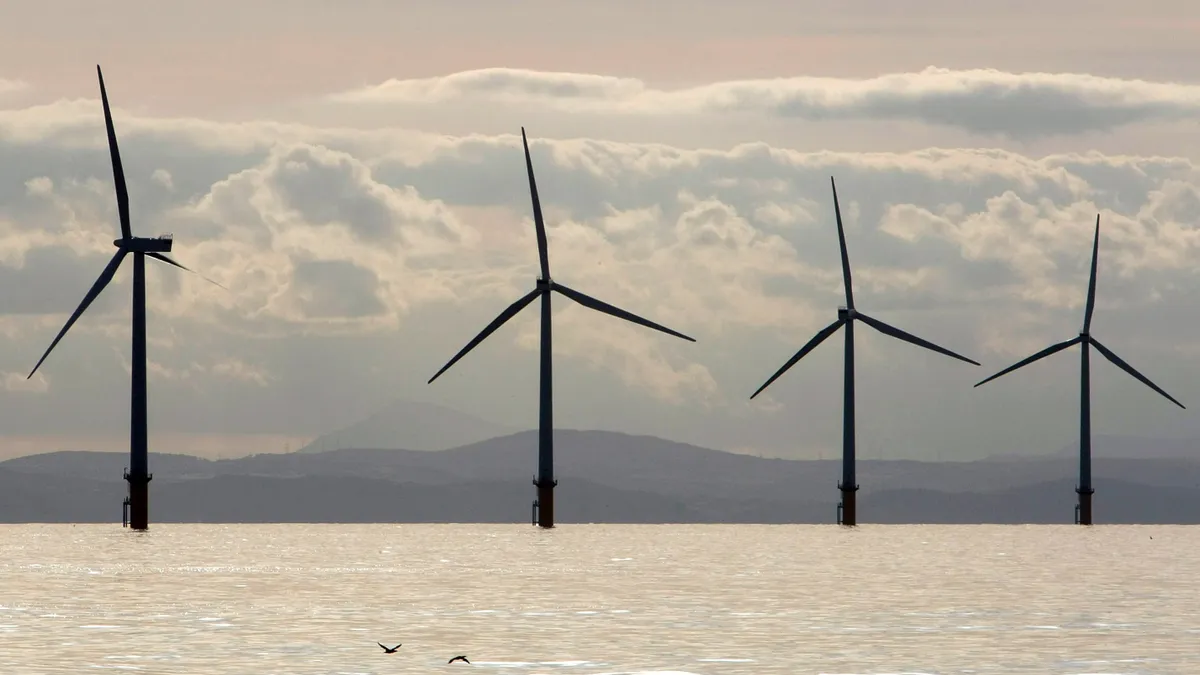Dive Brief:
- The California Energy Commission, or CEC, on Friday released a draft strategic plan for offshore wind development, which estimates a potential generation capacity of up to 59.6 GW off the state’s coast and lays out strategies for maximizing that potential.
- The draft plan was completed in accordance with a 2021 bill passed by the California legislature. Large parts focus on the obstacles facing the deployment of floating offshore wind, as the waters off the coast of California are too deep for the fixed-bottom turbines used in the Atlantic.
- “Certainly on the floating side, there's no plan in the country — maybe even in the world — that's as comprehensive as this,” Offshore Wind California’s Executive Director Adam Stern said of the 279-page report. “To me, that's a great achievement.”
Dive Insight:
“Much work remains to review and refine the details of this strategic plan, but its determination and direction is clear,” Stern said in a release. The release of a strategic plan — even in draft form — is a “big leap forward” for the state, he told Utility Dive.
“A lot of the report’s elements had existed in different places, and now they've all been brought together,” he said.
The first offshore wind lease auction off the coast of California was held in late 2022. Five lease areas covering more than 370,000 acres off the northern and central coasts were sold at an average of $2,028 per acre, significantly lower than the $8,951 average seen in Atlantic lease sales earlier that same year.
At the time, experts attributed these lower prices to uncertainty about the relatively new West Coast market — uncertainty due in part to the water depths in the lease sale areas.
“To date, most offshore wind energy projects have used fixed-bottom foundations, which are more suitable for shallow waters of 60 meters (about 200 feet) or less,” the CEC said in its report. “At the end of 2022, there were only 10 floating offshore wind energy projects operating globally, totaling 123.4 MW.”
California also faces the task of building up the infrastructure necessary to support offshore wind — including ports, supply chains and transmission.
“Many supply chain activities are also expected to collocate at or near the ports,” the CEC said. “These ports will need to construct, assemble, and service the foundations of floating offshore wind turbines.”
The commission recommends a “coordinated multiport strategy,” as “no single port site in California” is capable of serving the needs of the state’s entire offshore wind industry. The report suggests multiple port sites in the state that could be used for offshore wind, and says that these sites “must be developed as soon as possible to provide the state with the best opportunity to achieve the offshore wind planning goal of 25 GW by 2045.”
“Building out the multiport strategy that's been described in this plan, dividing up the responsibilities and doing the work on the parallel state and private funding that will be needed to execute on this is really important,” Stern said. “Similarly [important is] the transmission planning — this will only happen if we can bring the power to the grid.”
The report said the CEC had brought on consulting firm Guidehouse for a transmission technology assessment, which had indicated that “some of the critical cable, substation and other interconnection equipment needed to support offshore wind in California is still under development and not yet commercially available.”
California’s statutory goal for offshore wind procurement is 5 GW by 2030, and 25 GW of capacity by 2045. The CEC estimates that suitable sea space off the coast of California contains 35.8 GW to 59.6 GW of potential offshore wind capacity.
“They caveat by saying that there do appear to be conflicts with some of those areas which will have to be sorted out — but the fact that there's so much capacity that's been identified, even if only half of that could be advanced, that's comfortably in the realm to be able to get to the 25 gigawatt goal that we need,” Stern said.















